Learn celestial navigation in the Caribbean.
Before we can set sail across the Atlantic using just a sextant, we need to learn how. Your first two days will, therefore, be in the classroom rather than out at sea, getting intensive tuition in celestial navigation, its need for precise time, finding the right celestial body, local noon, using the almanac and sight reduction tables, the north star and more. You don’t need to have done any celestial before – we will teach you from the start. The Rubicon 3 course is famous for its plain English and straightforward approach, and thousands have learned to navigate on it. After class, there is some lovely R&R to be had on the island, and final preparations will be made on the yacht before the crossing.
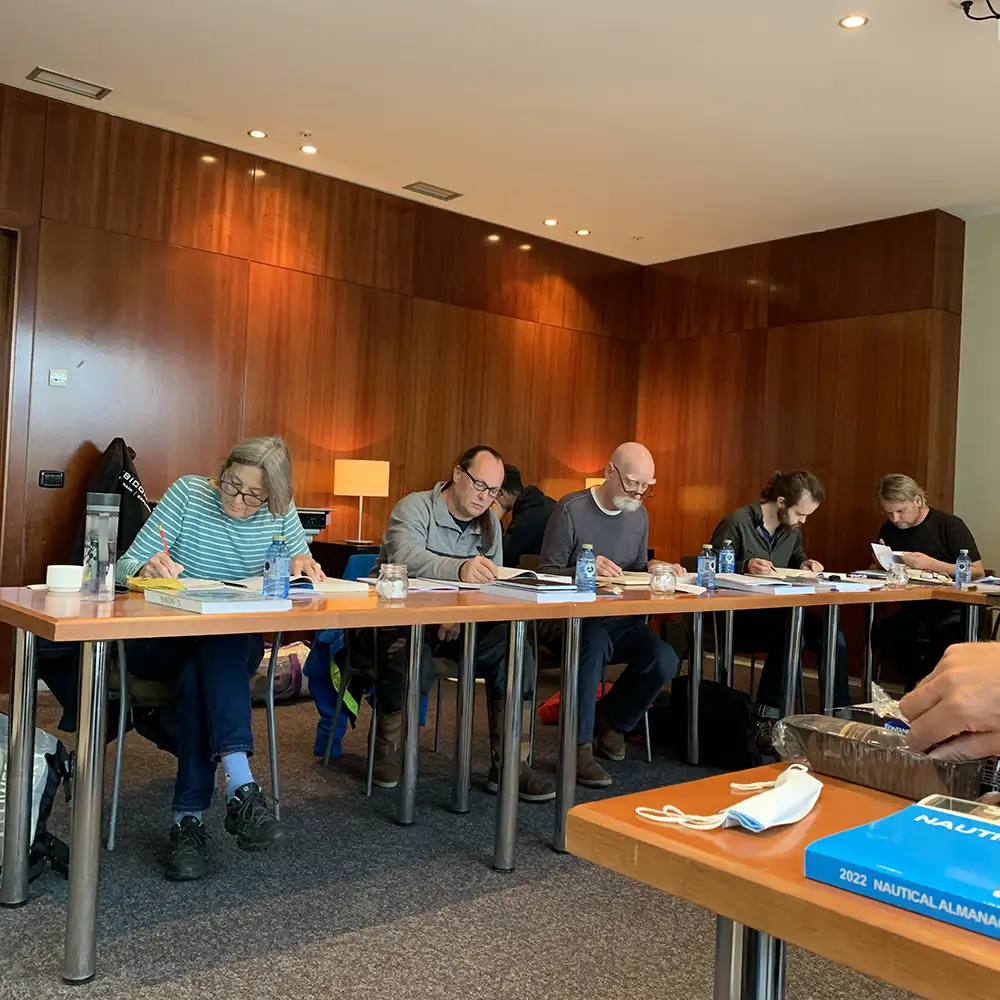
Sailing and training to get familiar with the yacht and brush up on skills
We will then have a day of sailing and training around the islands. This will give us time to get up to speed with the yacht individually and as a crew. A sail across the Atlantic takes proper training and preparation. It is a serious business, and we must maximize our crew performance. We will also be practicing our celestial navigation out on the water and checking that we can locate ourselves with a reasonable degree of accuracy! We are right in the warm trade winds here, so we can expect great sailing and training near perfect conditions and, with sunset at about 1630 each day, a fun, friendly evening afterward.
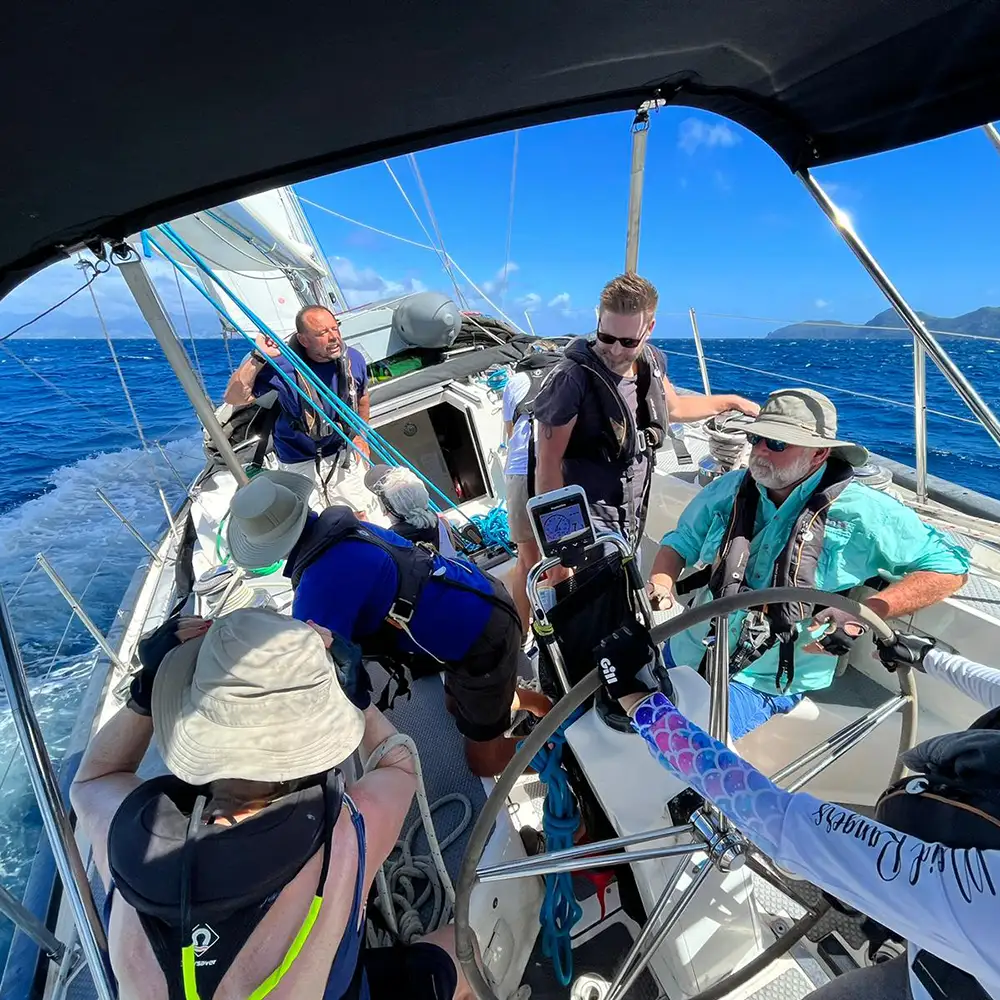
Sailing 1000nm north to Bermuda
Sailing west to east requires careful checks on the weather. Still, before we know it, the forecast will give us the weather conditions to set off on our transatlantic voyage from our start location and head northeast out into the vast expanse of the Atlantic Ocean. As we sail across the Atlantic, our route will be shaped by the position of the various weather systems and the Azores High, a vast clockwise rotating high-pressure system mid-ocean. This sits above the NE flows called trade winds that we use to head east to west on our southern passage. We hope to be in the more westerly air flows here on our northern passage. This usually means not aiming in a straight line for England but setting a course north toward Bermuda. If we are lucky, we will pick up the Gulf Stream as we head up the east coast of the States, which can give us a good knot or so of extra speed.
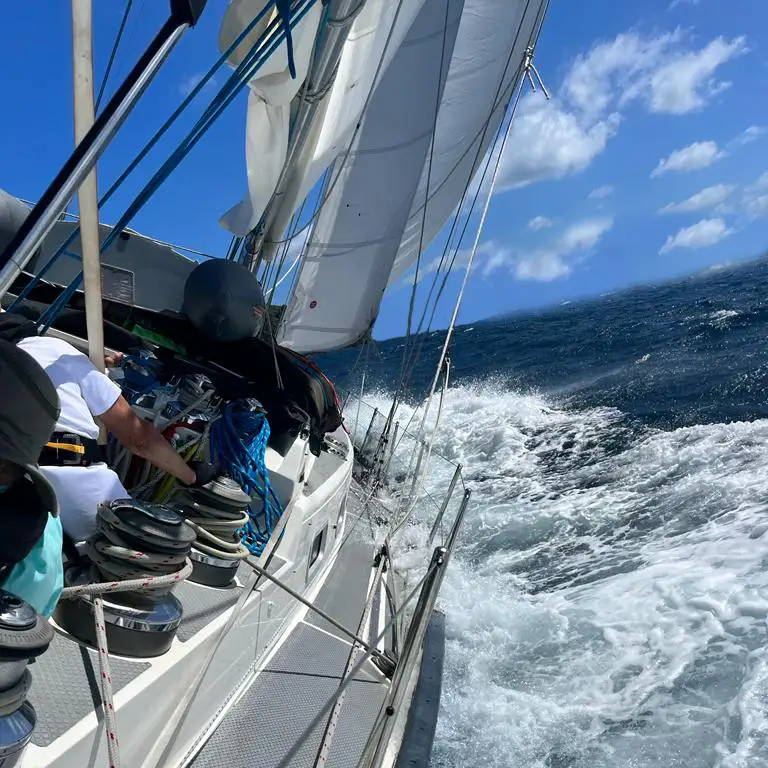
You will soon get into the rhythm of being out on the open sea. You will be in a watch system, so you will sometimes be helming and trimming sails and keeping the boat going at the best speed and course. Other times, you will be navigating, fixing our position with your newfound celestial skills (which will improve by the day), and advising the skipper and helm on the route. You will also have time below to cook up lovely hot food with your fellow crew members and prepare any fish caught that day. There’s also plenty of time to rest, sleep, or sit up on deck gazing out at the vast horizons or spectacular starscapes at night. Whether we go via Bermuda or curve east earlier will depend on the weather. But we will be near there, with this first stretch taking about 6-7 days at sea. Even when we encounter heavy weather, you will find that the fantastic Clipper 60 is a remarkably comfortable ride!
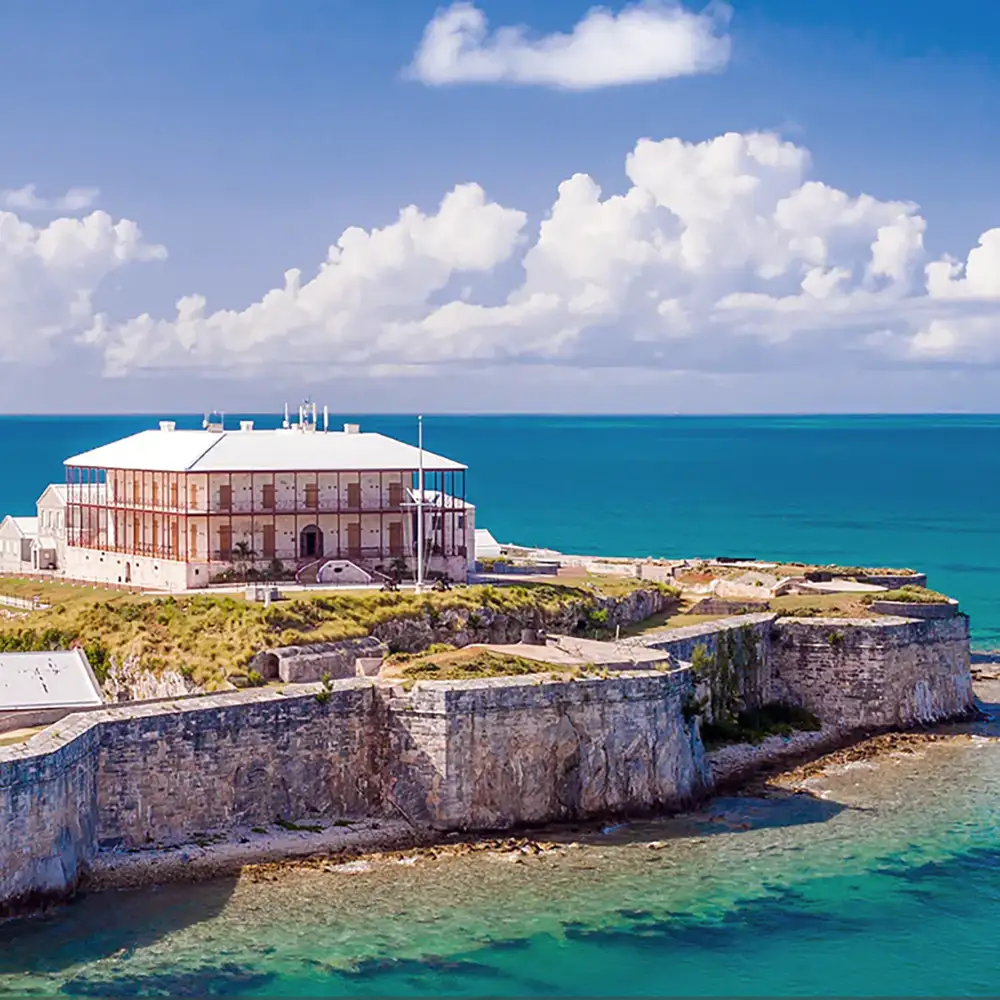

Sail from Bermuda to the Azores
The focus now is on sailing east, and we have around 2000nm to sail to the volcanic archipelago that is the Azores. This is the Atlantic Ocean in all its glory, and you will soon be more than 1000 miles from the nearest land. It is transatlantic sailing at its most authentic. You’ll often have a whale for company as they migrate across the oceans and the occasional cargo ship speeding by on the horizon. Mostly, however, it will just be you, the crew, and the incredible expanse of the Atlantic Ocean. We are self-sufficient, and as we sail east through sunrise, warm days, chillier days, calm days, rough days, and nights, and stars to remember for a lifetime, you will truly be living a memorable few weeks of your life.
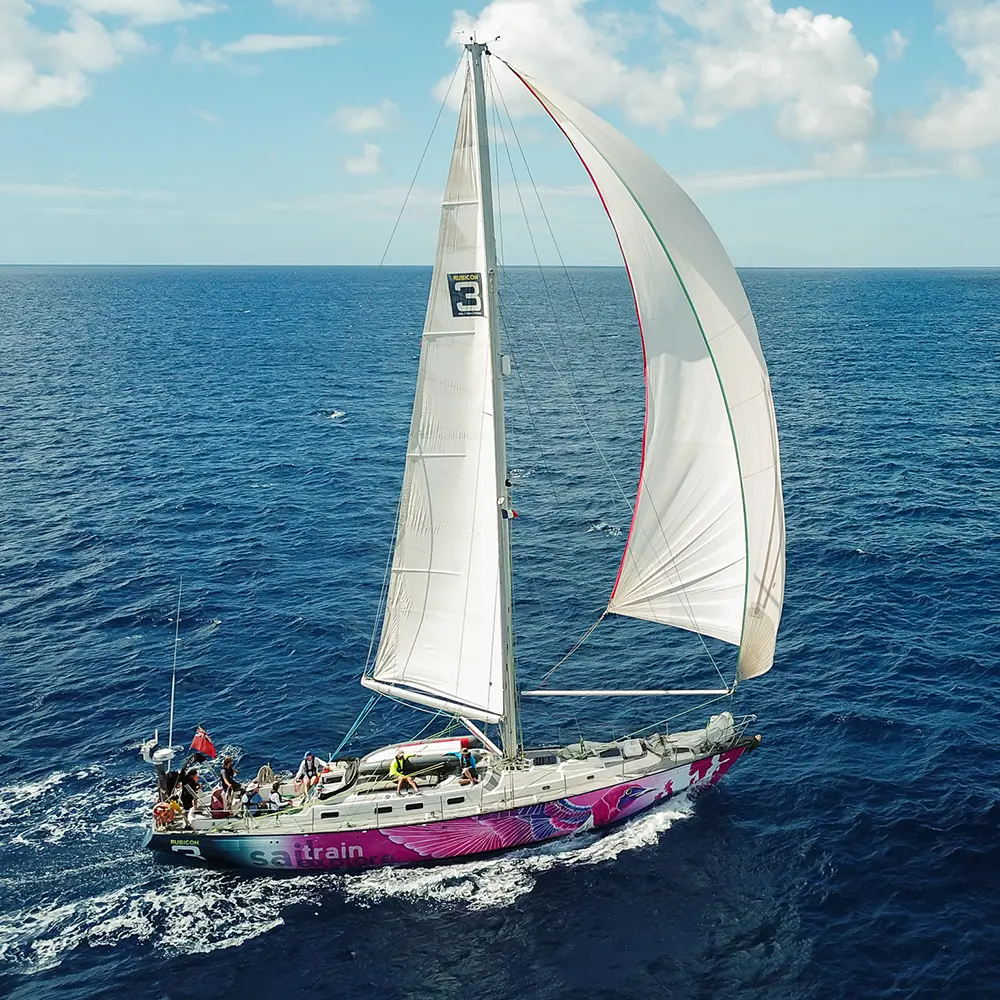
Landfall in the Azores
It will be around 14 days from leaving Bermuda until you see the cliffs of the Azores rise over the horizon, and it is always an exciting and welcome sight – and a marker for so many sailors on their Atlantic journies. We are only a few hundred miles north of the Canary Islands, the same location where we set off sailing west many months before on the World Cruising Club’s ARC, but it is a world away. How long we can stay here will depend on the speed we have made and the weather windows. At the very least, depending on how much fuel we have used, we can bunker and stock up on fresh food (which will seem a true luxury by now) to ensure we have enough supplies to get to the UK). By this stage, you will be familiar with measuring the Sun’s altitude, using a familiar constellation, and finding your position with the sextant.
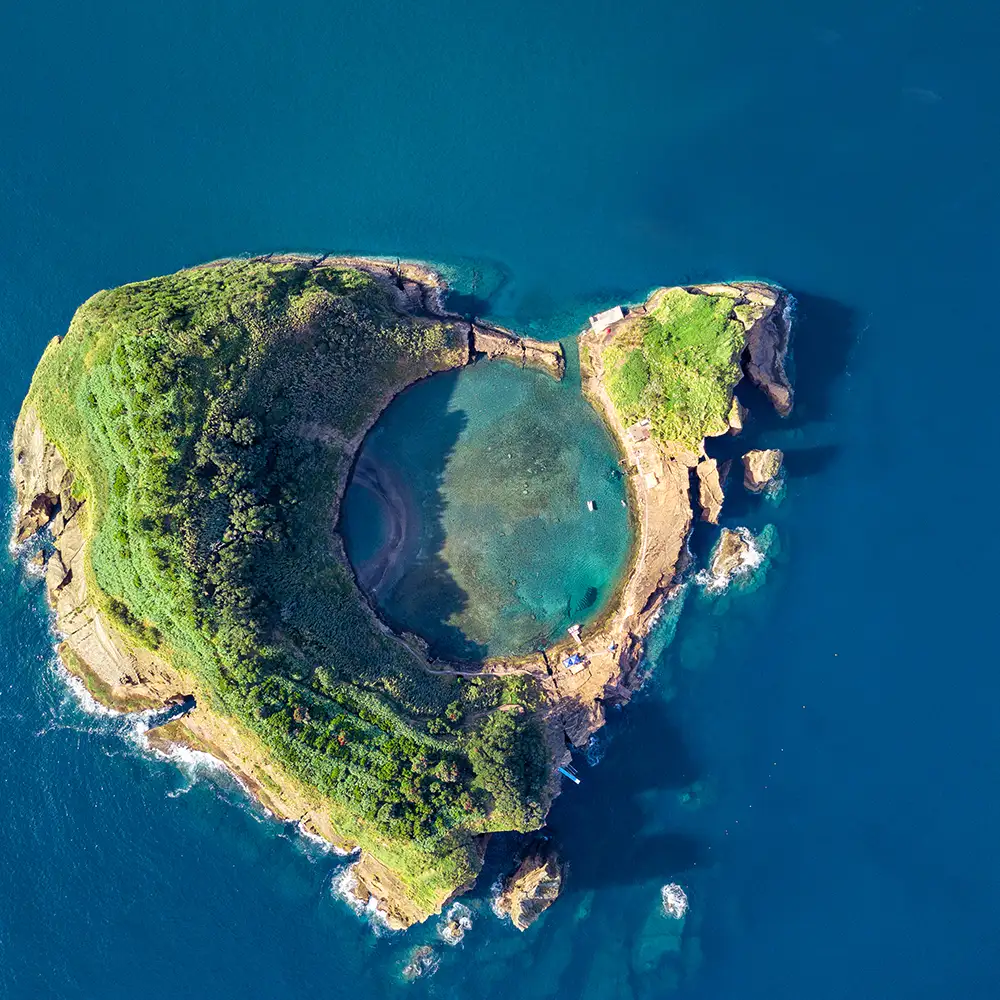
Sail from the Azores to Scotland
The final stretch of the Atlantic crossing is the 1,300nm passage to Scotland – a leg rich with history, legendary routes, and the sense of achievement that comes from closing the ocean behind you. As we head northeast, Ireland lies off to port and mainland Europe and the Bay of Biscay sit far to starboard. Our destination is Largs on the west coast of Scotland, and depending on weather and supplies, we may make one or two stops en route.
As we approach the western approaches, we will begin to pick up soundings and sight the landmarks that generations of sailors have used to find their way home. This final landfall carries a special sense of arrival: a fitting conclusion to a remarkable transatlantic adventure. By the time we tie up in Largs, we will have crossed the Atlantic Ocean entirely under our own power, navigating by the Sun, Moon, stars, and planets, and arriving just in time for the start of the northern hemisphere summer.
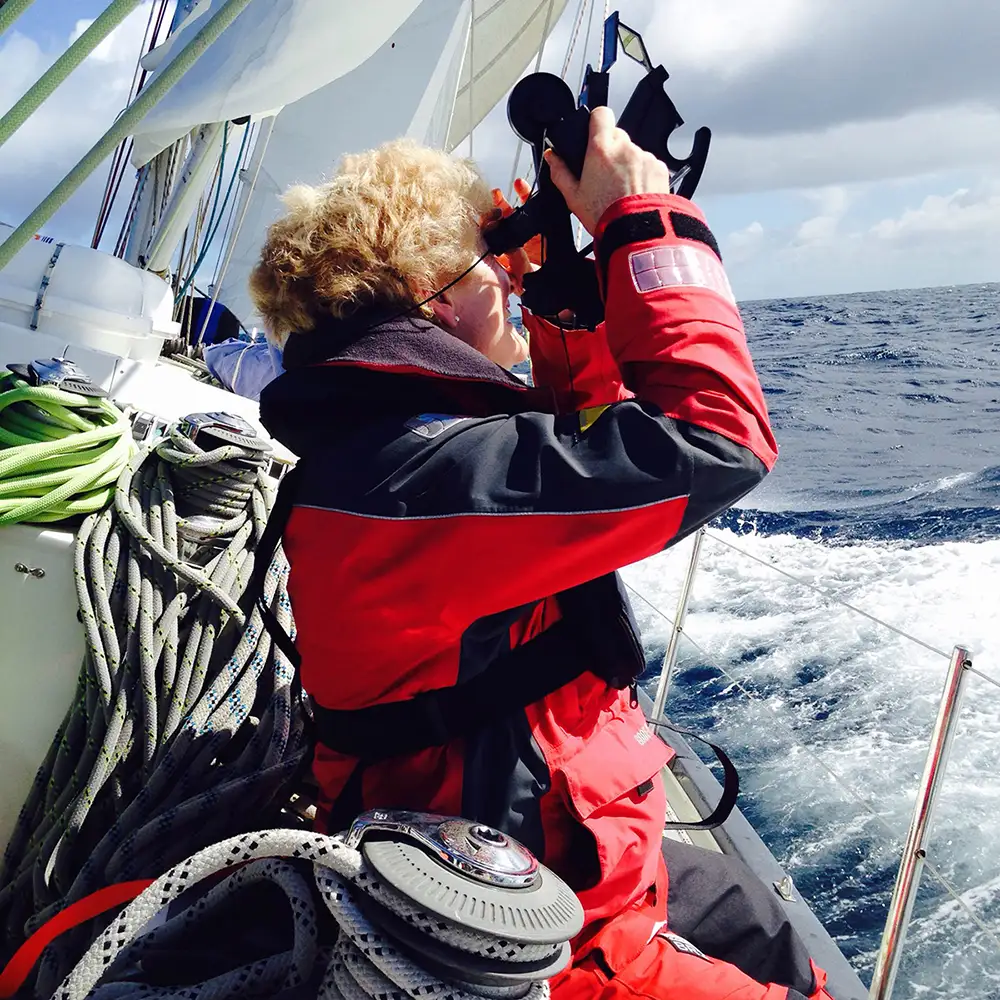
*Commercial regulations state we must still have full GPS capability on board, which will be used if safety is compromised.
The difference between Rubicon 3 and a yacht charter
This is not a luxury yacht charter vacation on a private yacht but a proper sailing adventure.
- Tailored Experience: Unlike many yacht charters, the Rubicon 3 team works daily to tailor the experience to your interests and skill level. Whether you’re interested in learning advanced sailing techniques, exploring off-the-beaten-path destinations, or focusing on particular activities like snorkeling or fishing, we look to help you achieve it.
- Expert Knowledge: Yacht charter companies will send you off with minimal instruction. Rubicon 3 has extensive local knowledge and expertise. We can find hidden gems, secluded anchorages, and the best spots that might be off the radar of the charter companies. This insider knowledge significantly enhances the sailing adventure.
- Learning Opportunities: Sailing this route with Rubicon 3, you don’t need any previous sailing experience. If you’re interested in learning about sailing, navigation, or seamanship, the expert Rubicon 3 instructors ensure a hands-on, educational experience. This is ideal if you see your sailing trip as a vacation and a learning opportunity.